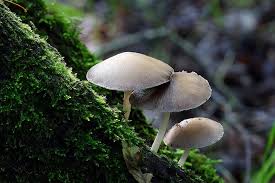Microbes Definition
“Microbes are single-celled organisms that are invisible to the naked eye.”
What are Microbes?
Microbes are minute, unicellular organisms that are invisible to the naked eye. They are also known as microorganisms or microscopic organisms as they could only be seen under a microscope. They make up almost 60% of the earth’s living matter.
The term “microbes” is used to describe several different life forms with different sizes and characteristics. A few of these microbes include:
- Bacteria
- Fungi
- Protists
- Viruses
- Archaea
Microbes can be useful as well as harmful. Certain microbes cause severe infections and diseases and can also spoil food and other materials. While others play an important role in maintaining environmental balance.
Let us have a detailed look at the different types of microorganisms and their importance.
Types of Microbes
The different types of microorganisms are:
Bacteria
- Bacteria are unicellular, microscopic, prokaryotic microorganisms that contain no true nucleus.
- Their cell wall is made up of peptidoglycan. They have a flagellum that facilitates locomotion.
- Bacteria are of different types depending on their shapes and sizes. E.g., spherical-shaped bacteria are known as cocci; rod-shaped bacteria are known as bacilli; spiral-shaped, spirilla, etc.
- They reproduce through binary fission, transfer of genetic material occurs through transformation, transduction and conjugation, and through sporulation.
- Bacteria play an important role in human survival. They break down nutrients in the digestive system into simpler forms.
- Few bacteria such as Rhizobium are involved in nitrogen fixation.
- They are also used for making antibiotics and can also be used in agriculture as biopesticides.
Also Read: Bacterial Genetics
Fungi

- These can be unicellular or multicellular with the cell wall made of chitin.
- These are heterotrophic and cannot synthesise their own food.
- They comprise membrane-bound organelles.
- Yeasts, moulds, mushrooms are some of the important fungi.
- They decompose dead plants and animals, extracting nutrients from them.
- Few fungi are harmful and cause fungal infections like ringworm. The others are used in making antibiotics like penicillin.
- Fungi such as yeast are used in the baking industries and also in the beer and wine industries.
Also Read: Kingdom Fungi
Viruses

- Viruses are a connecting link between living and non-living.
- They are non-cellular microorganisms, composed of protein, nucleic acids, and lipids.
- They are measured in nanometers with sizes ranging from 20 nanometers to 250 nanometers and could only be seen with an electron microscope.
- They contain the core of nucleotides surrounded by a protein coat which could invade living cells.
- They are active inside host cells and reproduce inside them by infecting living cells.
Protists
- These are unicellular, microscopic organisms that are neither plants nor animals.
- They may be autotrophic or heterotrophic.
- They reproduce mainly through binary fission or budding.
- This group includes plant-like protists such as diatoms, dinoflagellates, animal-like protists such as amoeba, and fungus-like such as slime moulds.
- Protists supply us with oxygen and recycle crucial nutrients to make it available to other life forms.
Archaea
- These are unicellular prokaryotic organisms and have a structure similar to bacteria.
- Their cell wall is different from bacteria and contains unique lipids that enable them to survive in extreme conditions.
- They are also found in human gut and skin.
Also Read: Archaebacteria
To know more about what are microbes and the different types of microorganisms, keep visiting BYJU’S website.

Now only I can understand what is microorganisms
I want to learn in byjuse nice reading and learning app